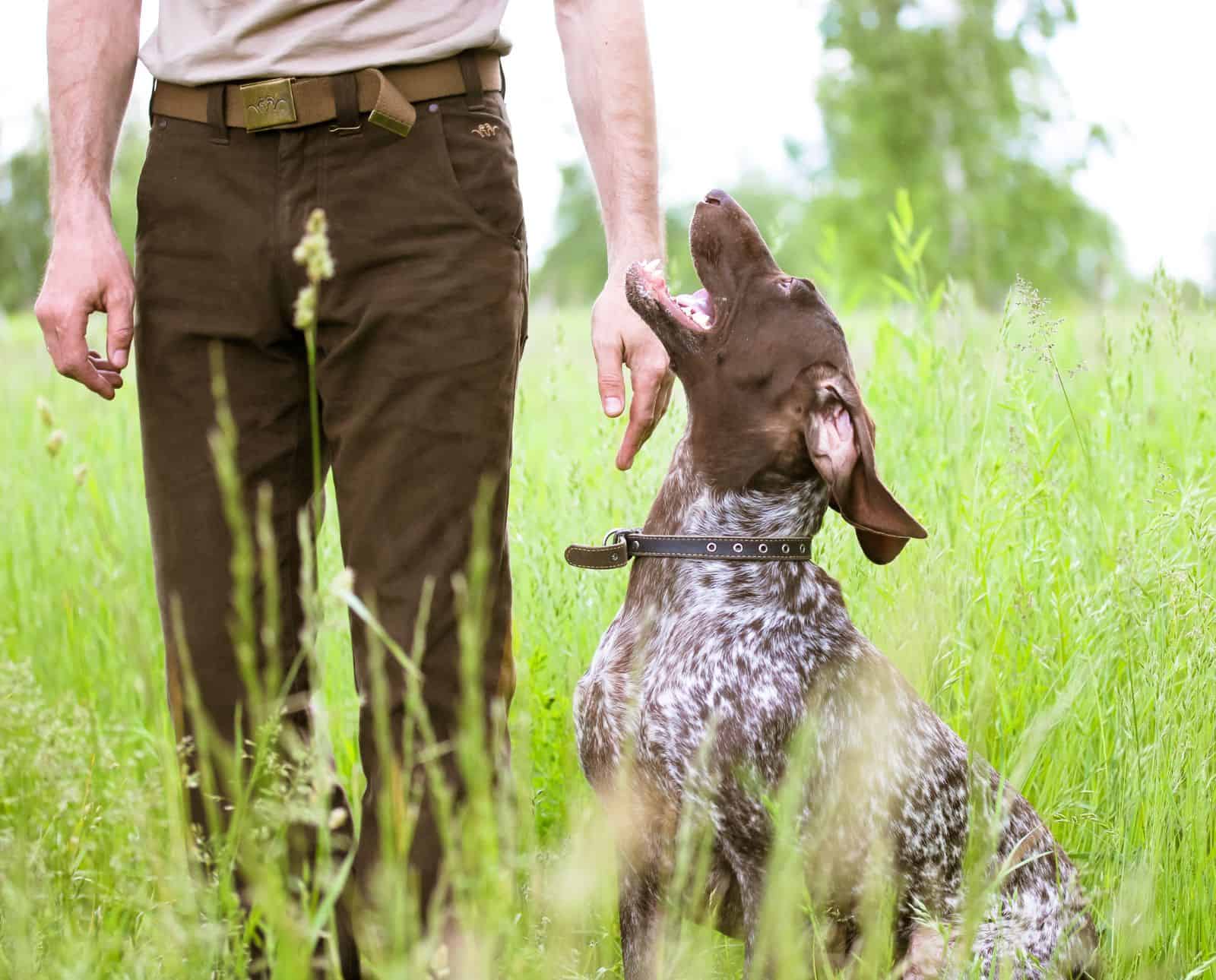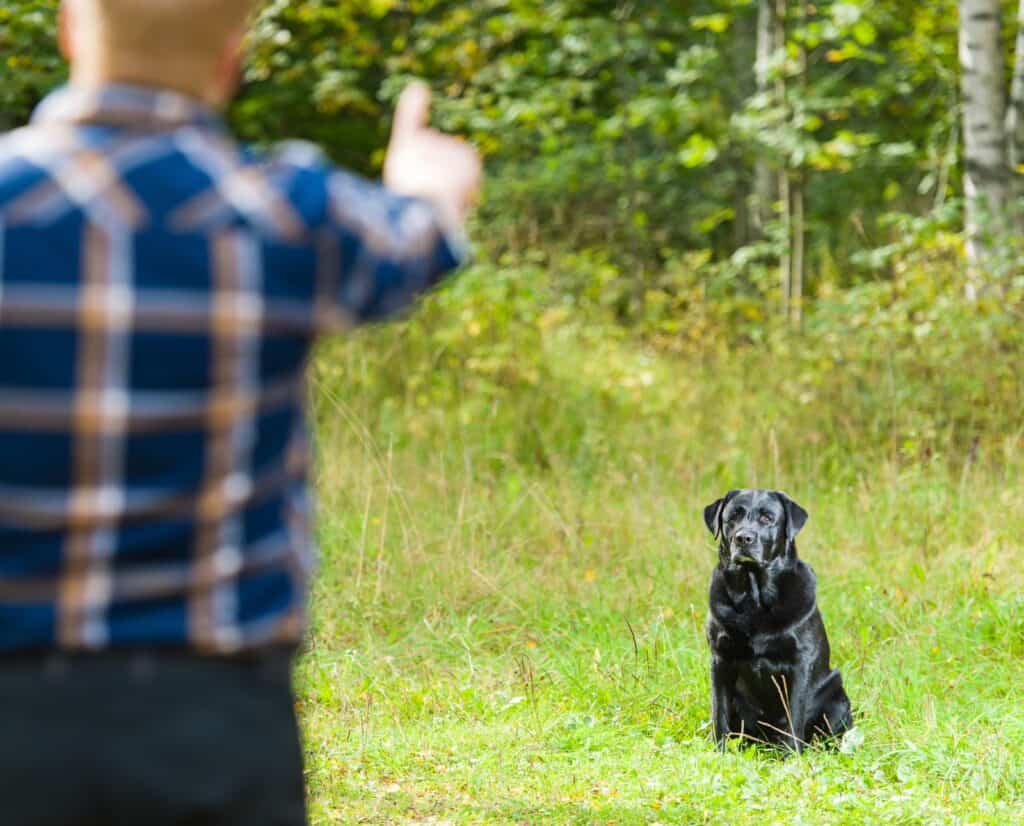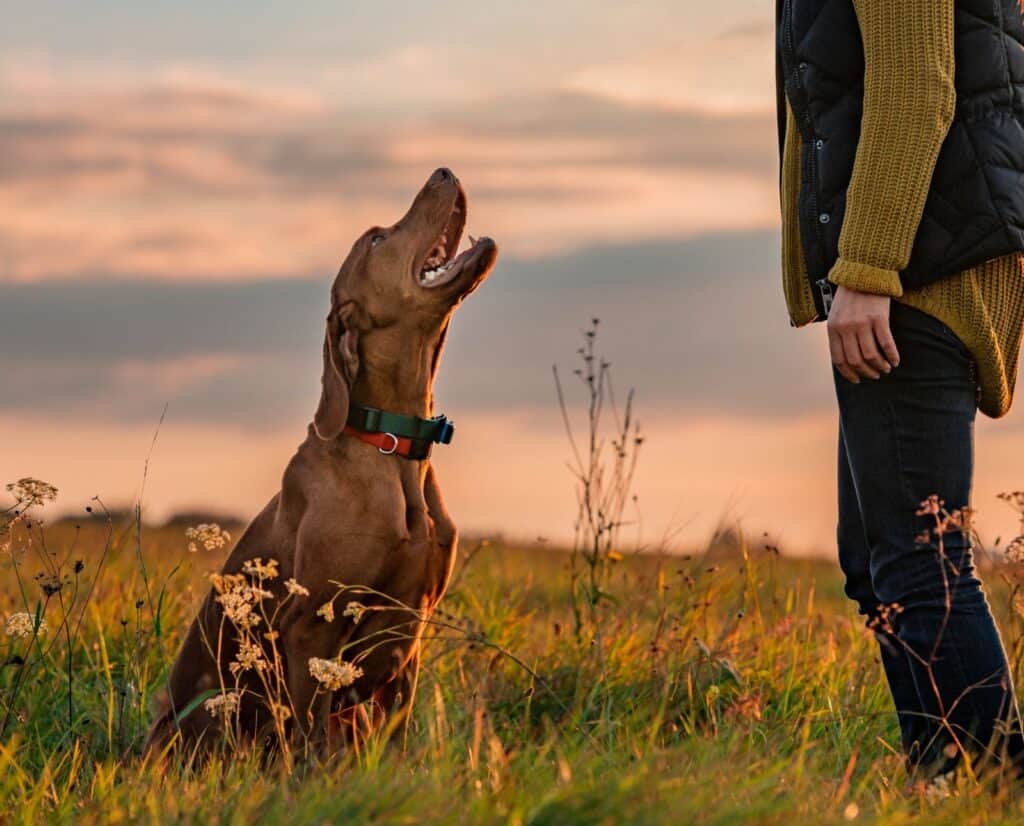Home » Hunting Dogs » Commanding And Naming Your Dog With Vowel Sounds In Mind
Commanding And Naming Your Dog With Vowel Sounds In Mind

Bob grew up in Plains, Pennsylvania with a love for…
When it comes to effectively communicating with your dog, using strong vowel sounds make all the difference.
In “How to Correctly Command Your Dog,” Jason Carter wrote:
Over-commanding, more affectionately known as “nagging,” will eventually cause the dog to ignore you. Streamline your commands towards only speaking when you have something to say. Never lay commands on top of one another. Be sure that your dog adheres to the first command before giving the second, which will help to prevent command overload. Dogs figure that the first two commands are shots across the bow and are waiting for that all-expressive third command that you back up with a correction.
Having reminded me of my pupils and my children, it got me thinking there might be more to the story.
The Power of Attention in Commands
Before giving a command, it’s crucial to get the listener’s attention—whether it’s a person or a dog. How many times have you responded with “What?” even when you technically heard someone? The issue isn’t hearing; it’s that you weren’t fully paying attention. By the time you tune in, half the message is already said.
The same applies to dogs. That’s why you should always say your dog’s name before giving a command. Their name should also be distinct from any command, avoiding similar sounds or overlapping vowel patterns. Dogs have a keener ear for language than many realize, and if you’re unsure about sound distinctions, an English teacher or a good dictionary can help refine your choices. I like to use The Merriam-Webster Dictionary pronunciation key. The online dictionary shows local dialects too, such as kär or kȯr for car.

Why Sounds Matter in Commands
The military employs an effective technique for ensuring clear commands: a long attention-grabbing sound followed by a short, sharp directive, like Forw-a-a-a-a-rd, March! They often start with an open-mouthed vowel sound punctuated by a closed-mouth consonant. Just as a rhythmic cadence (Hup, two-p, three-p, four-p!) ensures that even soldiers in the back hear the order clearly and on time.
Here is an example from the dog ownership world. I once had a Brittany named Copper, but in the field, I called him “Cop” for short. This created a challenge—I couldn’t use “Stop” as a command for whoa since it sounded too similar. At the same time, whoa was too close to no for corrections, so I simply used whoa to stop everything, then redirect his behavior. Copper learned well, but my then-young children didn’t quite grasp it. As Copper escaped from the yard one day, my children yelled everything except whoa as he ran toward the street. Luckily, Copper was unharmed, and the kids learned a valuable lesson.
Vowel sounds—a, e, i, o, u, and sometimes y—are open-mouthed and carry well through the air, pushed forcefully from the diaphragm. Consonants, in contrast, are shaped by the lips and tongue, interrupting airflow and damping volume. Try saying the letter “m” without adding a vowel—it’s impossible. Saying “m” by itself produces only a soft m-m-m sound. That’s why opera favors vowel-rich languages like Italian, whereas English and German, with their heavier consonant usage, have fewer iconic operas. Austrians, faced with similar linguistic challenges, turned to yodeling in the Alps to project their voices over long distances.
You can hear the power of vowels in everyday speech—whether it’s a cowboy herding cattle, an auctioneer rattling off prices, or a sergeant moving troops.
Choosing the Right Name for Your Dog
With all this in mind, here’s a simple guideline for naming your dog:
- Get their attention first. Always say their name before a command, a one syllable nickname in a long drawn out way helps.
- Avoid common human names. If your dog has a human name, be sure it’s not common, or that of someone you might know, to avoid interrupting your dog’s concentration.
- Avoid similar-sounding names and commands. If a command contains the same vowel patterns as the dog’s name, it can cause confusion. Language plays a bigger role in training than most people think. My father and grandfather were both language arts teachers—experts in Latin, English, and French. My father, Robert P., even wrote a book on dictionary skills to guide pronunciation.
Drawing from that knowledge, I emphasize the importance of sound clarity in dog training. Choosing the right name and using precise commands will help ensure your dog listens every time. To avoid confusion, I turned to the roughly twenty vowel sounds in American English to develop a structured list of commands and dog names.

Vowels In Field Commands (Sounds 1–13)
You might see some of your commands on this list. Here’s how some of the sounds break down.
- ā – as in stay or place
- a – as in back or snap
- ä – as in spot or drop
- au̇ – as in about or down
- är – as in mark or car
- ē – as in heel or easy
- e – as in left or fetch
- ī – as in right or by
- i – as in sit or give
- ir – as in here or deer
- ō – as in whoa or over
- ǝ – as in come or hup
- u̇ – as in put or good
These sounds form the foundation of effective field commands. Then decide on your dog’s name.
Vowels In Dog Names (Sounds 14–20)
I found that the remaining seven vowel sounds weren’t very useful for commands, so I assigned them to dog names instead:
14. er – Bear or Jer (Jerry) – as in fair or wear
15. ȯ – Vaugh or Dawn – as in off or walk
16. ȯr – Ward or Thor – as in door or shore
17. u̇r – Moor or Flor (Florence) – as in insure or tour
18. ü – Newt or Boots – as in youth or rule
19. ȯi – Roy or Troy – as in coin or boy
20. ǝr – Merv or Irv (Irving) – as in bird or girl
These sounds are not likely to be on a list of field commands. Be creative.
Praise Words (Sound 13 with 19 or 20)
Instinctually and nearly universally, we praise our dogs with Good Boy or Good Girl. Our dogs might hear the consonants when nearby, but when 15-plus yards out on a windy day, they hear “u̇ – ȯi“ or “u̇ – ǝr” as they pick up the bird with an enormous sense of self-satisfaction and bring the prize home.
Group vowel sounds with speed, stress and/or intonation for commands with more than one syllable. For example: say “kennel up” very quickly to combine the sounds (ke-nǝl ǝp); or draw out the first sound punctuated by a second when using “over” (h-ō–ō–ō-vǝr-p). Don’t forget the closed mouth or lips at the end to make the sound pop.
By following this method, you can avoid sound confusion in training and ensure your commands are clear and distinct. Give it a shot and see how it works for you!
Bob grew up in Plains, Pennsylvania with a love for fishing and hunting in the Pocono northeast. While Bob is not an expert trainer or renowned breeder, his love of Brittanys as hunting companions and family members is without question. He was a science teacher and, having been raised in a family of educators, he had a certain appreciation for language. After graduating from the University of Houston College of Optometry, he served in the US Air Force and raised his four children in Wilkes-Barre, PA. Bob now resided in Colonial Heights, Virginia.




Interesting. We didn’t realize how much we already use the pronunciation you described in commands and names. This explains the sounds well and makes us much more aware of how to command the dog. Thanks for this article!
When choosing a name for a hunting dog, I always try to pick a name that has a long vowel sound in it. A long vowel will carry further in the field, especially on a windy day.